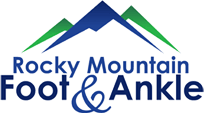Break Them in First
New boots are awesome unless you’re heading out on the trail without testing them first. Give yourself some time to break them in by going for long walks near your home. As for those old trusty standbys, if they’re ancient, throw them out. A friend once was on a backpacking trip where the leader advised everyone to wear well-broken-in boots. One participant’s boots were so old that the soles separated from the uppers on both boots on the second day out. The joke became that the boots were supposed to be broken in not broken down!
Wear the Right Socks
Now you’ve settled on your hiking boots; you need to think about socks. To prevent blisters, many hikers recommend wearing lightweight liners inside a pair of thicker hiking socks. The one thing to avoid at all costs is cotton – cotton socks will get wet from your sweaty feet, from rain, or crossing streams, and they will stay soaked. Woolen or synthetic socks when damp will still keep your feet warm and blister free. Some hikers like to wear two pairs of hiking socks for added padding and comfort.
Pack Extra Socks
On a multi-day backpacking trip, always pack a pair of extra socks to ensure your feet stay as dry and clean as possible. If both your boots and socks are wet or damp when you reach camp, there’s no point in putting on your nice dry spare socks and then putting your feet back into wet boots. So here’s a tip – put your dry socks over your feet, then cover your feet with plastic bags before you put your wet boots back on. This is only a temporary fix though. Get your feet out of the wet boots as soon as possible.
Toughen up Your Feet
Before the beginning of each hiking season, take a few weeks to strengthen your feet. Carry a backpack with a moderate load and walk until you start to feel a hot spot coming and then call it a day. Actual exercises such as heel raises and towel grabs (where you use only your toes to pull the towel under your foot) will help strengthen the muscles on the bottom of your feet.
Bring a Ball
While your tootsies are drying out, give them a little extra loving with a golf ball that you so cleverly packed. A golf ball is by no means a camping necessity, but a Rolling the ball with the bottom of your feet will help relax and improve flexibility in your foot muscles and help prevent plantar fasciitis.
Blisters
If, in spite of your best preventative efforts, you still end up with a blister on your foot, lance it to drain the fluid. Then cover the area with Moleskin or something similar. Don’t stick the Moleskin directly on the lanced blister; cut a hole in it to go over the sensitive area. You can also choose to carry a blister kit specially made to deal with blisters.

